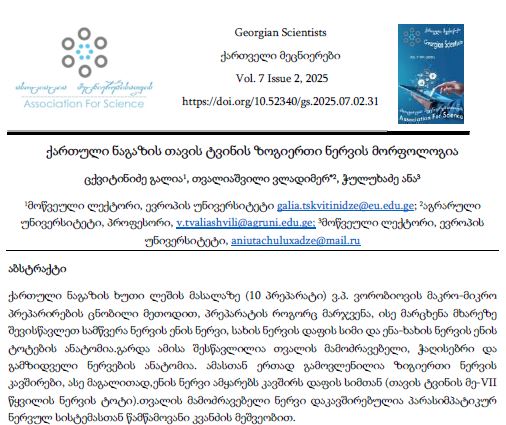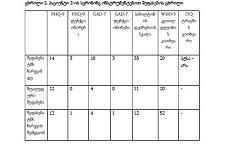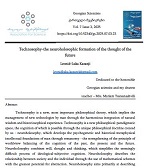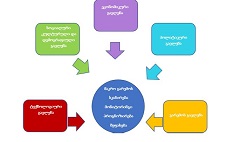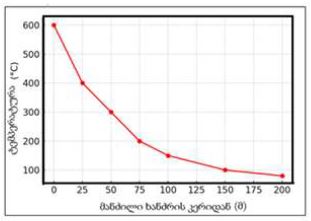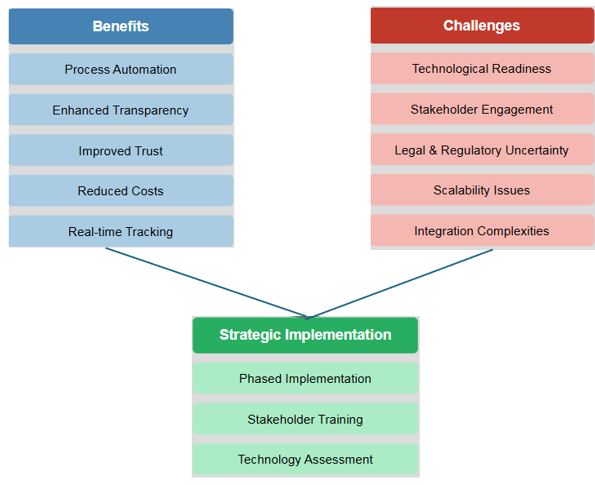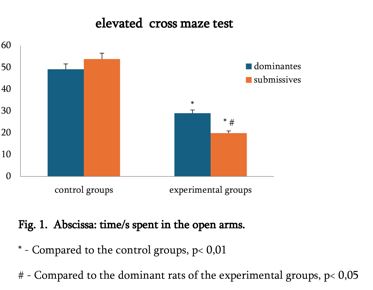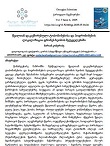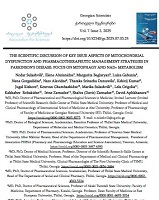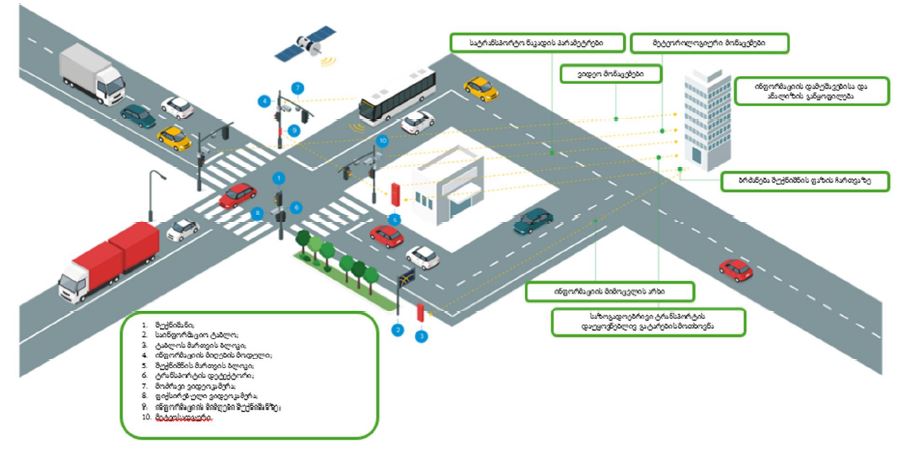Diagnostic challenges for the distinction of high-grade prostatic adenocarcinoma and high-grade urothelial carcinoma of simultaneous occurrences - A literature review
Downloads
Abstract: Two of the most prevalent types of cancer in men are prostate adenocarcinoma and urothelial carcinoma. Both can appear separately in the prostate and bladder, simultaneously as separate tumors affecting either organ or sporadically as a collision tumor. Distinguishing these tumors by the pathologist can be challenging, especially when the high-grade, poorly differentiated forms infiltrate the surrounding organs. The correct approach by the pathologist is important due to the different treatment modalities for these two entities. This review of the literature gives a comprehensive overview, our succinct understanding of the significance of correctly differentiating between these two tumors, the challenges involved in doing so, and the best collection of crucial and useful immunohistochemical markers for better diagnostic performance.The scientific papers used in this review were retrieved from the PubMed and Google Scholar databases. All the studies in this review have recently been peer-reviewed and published in academic journals. The literature was sifted through to find the most relevant and up-to-date information for medical professionals, specifically pathologists. The review concluded that: 1) Prostatic and urothelial markers such as NKX3.1, p63, thrombomodulin, and GATA3 are very useful for distinguishing prostatic adenocarcinoma from urothelial carcinoma. 2) Prostate Specific Antigen (PSA) is a good (clinical) screening tool, but because of its inverse relationship with tumor grade (the higher the grade, the lower the sensitivity of PSA staining), it is not recommended for high-grade tumor differentiation. 3) HMWCK (34βe12) and p63 are said to be more effective than thrombomodulin and S100p in detecting urothelial cancer. 4) Thrombomodulin is only moderately sensitive to urothelial carcinoma. 5) Cytokeratins 7 and 20 can be positive in both urothelial carcinoma and prostatic adenocarcinoma, therefore their use is restricted. The optimal combination of these markers may improve the ability to distinguish these tumors.
Downloads
Metrics
Mohanty SK, Smith SC, Chang E, et al. Evaluation of contemporary prostate and urothelial lineage biomarkers in a consecutive cohort of poorly differentiated bladder neck carcinomas. Am J Clin Pathol. 2014;142(2):173-183. doi:10.1309/AJCPK1OV6IMNPFGL
Oh WJ, Chung AM, Kim JS, et al. Differential Immunohistochemical Profiles for Distinguishing Prostate Carcinoma and Urothelial Carcinoma. J Pathol Transl Med. 2016;50(5):345-354. doi:10.4132/jptm.2016.06.14
Martínez-Rodríguez M, Ramos D, Soriano P, Subramaniam M, Navarro S, LlombartBosch A. Poorly differentiated adenocarcinomas of the prostate versus high- grade urothelial carcinoma of the bladder: a diagnostic dilemma with the immunohistochemical evaluation of 2 cases. Int J Surg Pathol. 2007;15(2):213-218. doi:10.1177/1066896906295822
Epstein JI, Egevad L, Humphrey PA, Montironi R; Members of the ISUP Immunohistochemistry in Diagnostic Urologic Pathology Group. Best practices recommendations in the application of immunohistochemistry in the prostate: report from the International Society of Urologic Pathology consensus conference. Am J Surg Pathol. 2014;38(8):e6-e19. doi:10.1097/PAS.0000000000000238
Signoretti S, Waltregny D, Dilks J, et al. p63 is a prostate basal cell marker and is required for prostate development. Am J Pathol. 2000;157(6):1769-1775. doi:10.1016/S00029440(10)64814-6
Amin MB, Trpkov K, Lopez-Beltran A, Grignon D; Members of the ISUP Immunohistochemistry in Diagnostic Urologic Pathology Group. Best practices recommendations in the application of immunohistochemistry in the bladder lesions: report from the International Society of Urologic Pathology consensus conference. Am J Surg Pathol. 2014;38(8):e20-e34. doi:10.1097/PAS.0000000000000240.
Genega EM, Hutchinson B, Reuter VE, Gaudin PB. Immunophenotype of high-grade prostatic adenocarcinoma and urothelial carcinoma. Mod Pathol. 2000;13(11):1186- 1191. doi:10.1038/modpathol.3880220
Chuang AY, DeMarzo AM, Veltri RW, Sharma RB, Bieberich CJ, Epstein JI. Immunohistochemical differentiation of high-grade prostate carcinoma from urothelial carcinoma. Am J Surg Pathol. 2007;31(8):1246-1255. doi:10.1097/PAS.0b013e31802f5d33.
Hameed O, Humphrey PA. Immunohistochemistry in diagnostic surgical pathology of the prostate. Semin Diagn Pathol. 2005;22(1):88-104. doi:10.1053/j.semdp.2005.11.001
Hameed O, Humphrey PA. Immunohistochemistry in diagnostic surgical pathology of the prostate. Semin Diagn Pathol. 2005;22(1):88-104. doi:10.1053/j.semdp.2005.11.001
Higgins JP, Kaygusuz G, Wang L, et al. Placental S100 (S100P) and GATA3: markers for transitional epithelium and urothelial carcinoma discovered by complementary DNA microarray. Am J Surg Pathol. 2007;31(5):673-680. doi:10.1097/01.pas.0000213438.01278.5f
Miettinen M, McCue PA, Sarlomo-Rikala M, et al. GATA3: a multispecific but potentially useful marker in surgical pathology: a systematic analysis of 2500 epithelial and nonepithelial tumors. Am J Surg Pathol. 2014;38(1):13-22. doi:10.1097/PAS.0b013e3182a0218f
Rubin MA, Zhou M, Dhanasekaran SM, et al. alpha-Methylacyl coenzyme A racemase as a tissue biomarker for prostate cancer. JAMA. 2002;287(13):1662-1670. doi:10.1001/jama.287.13.1662.
Luo J, Zha S, Gage WR, et al. Alpha-methyl acyl-CoA racemase: a new molecular marker for prostate cancer. Cancer Res. 2002;62(8):2220-2226.
Paner GP, Luthringer DJ, Amin MB. Best practice in diagnostic immunohistochemistry: prostate carcinoma and its mimics in needle core biopsies. Arch Pathol Lab Med. 2008;132(9):1388-1396. doi:10.5858/2008-132-1388-BPIDIP
Ud Din N, Qureshi A, Mansoor S. Utility of p63 immunohistochemical stain in differentiating urothelial carcinomas from adenocarcinomas of prostate. Indian J Pathol Microbiol. 2011;54(1):59-62. doi:10.4103/0377-4929.77326
Ordóñez NG. Thrombomodulin expression in transitional cell carcinoma. Am J Clin Pathol. 1998;110(3):385-390. doi:10.1093/ajcp/110.3.385
Mohammed KH, Siddiqui MT, Cohen C. GATA3 immunohistochemical expression in invasive urothelial carcinoma. Urol Oncol. 2016;34(10):432.e9-432.e13. doi:10.1016/j.urolonc.2016.04.016
McDonald TM, Epstein JI. Aberrant GATA3 Staining in Prostatic Adenocarcinoma: A Potential Diagnostic Pitfall. Am J Surg Pathol. 2021;45(3):341-346. doi:10.1097/PAS.0000000000001557.
Chou J, Provot S, Werb Z. GATA3 in development and cancer differentiation: cells GATA has it! J Cell Physiol. 2010;222(1):42-49. doi:10.1002/jcp.21943.
Miettinen M, McCue PA, Sarlomo-Rikala M, et al. GATA3: a multispecific but potentially useful marker in surgical pathology: a systematic analysis of 2500 epithelial and nonepithelial tumors. Am J Surg Pathol. 2014;38(1):13-22. doi:10.1097/PAS.0b013e3182a0218f
Tian W, Dorn D, Wei S, et al. GATA3 expression in benign prostate glands with radiation atypia: a diagnostic pitfall. Histopathology. 2017;71(1):150-155. doi:10.1111/his.13214
Olsburgh J, Harnden P, Weeks R, et al. Uroplakin gene expression in normal human tissues and locally advanced bladder cancer. J Pathol. 2003;199(1):41-49. doi:10.1002/path.1252
Kageyama S, Yoshiki T, Isono T, et al. High expression of human uroplakin Ia in urinary bladder transitional cell carcinoma. Jpn J Cancer Res. 2002;93(5):523-531. doi:10.1111/j.13497006.2002.tb01287.
Mhawech P, Uchida T, Pelte MF. Immunohistochemical profile of high-grade urothelial bladder carcinoma and prostate adenocarcinoma. Hum Pathol. 2002;33(11):1136-1140. doi:10.1053/hupa.2002.129416
Xu X, Sun TT, Gupta PK, Zhang P, Nasuti JF. Uroplakin as a marker for typing metastatic transitional cell carcinoma on fine-needle aspiration specimens. Cancer. 2001;93(3):216- 221. doi:10.1002/cncr.9032
Chuang AY, DeMarzo AM, Veltri RW, Sharma RB, Bieberich CJ, Epstein JI. Immunohistochemical differentiation of high-grade prostate carcinoma from urothelial carcinoma. Am J Surg Pathol. 2007;31(8):1246-1255. doi:10.1097/PAS.0b013e31802f5d33

This work is licensed under a Creative Commons Attribution-NonCommercial-NoDerivatives 4.0 International License.
























































